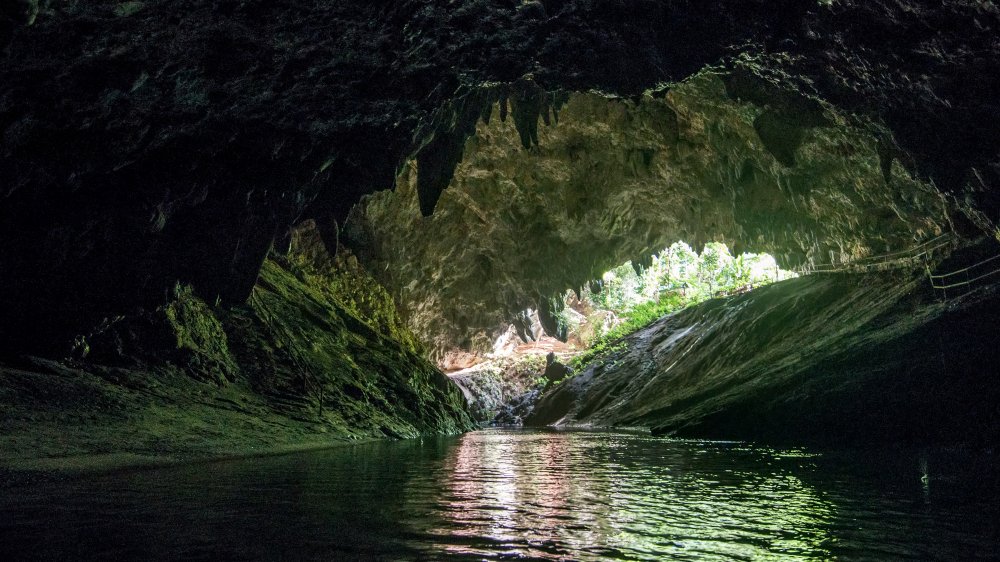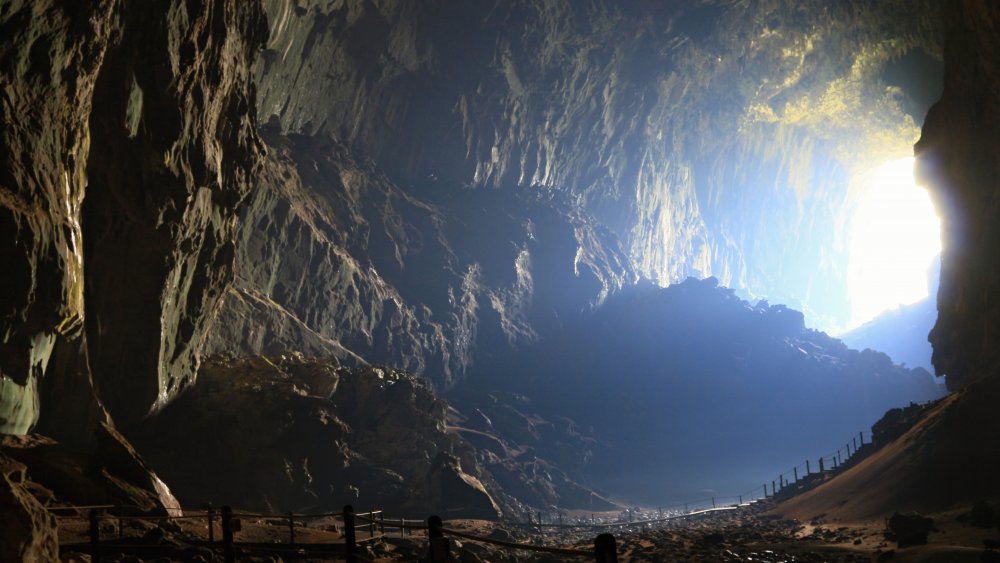The Truth About How Caves Form
One of the more exciting things about geology is how things form. Take caves, for example. For so long, humans have taken shelter inside them or stepped cautiously, afraid of what they may see. Caves hold many secrets humanity has yet to explore. But mountains or rock formations don't just have caves in them from the start.
Caves form through different processes, explained the British Geological Survey. First, rainwater picks up carbon dioxide in the air from dead and decaying plants and turns into a weak acid called carbonic acid. This acid slowly dissolves limestone, which makes up most caves, then sinks underground, creating a water-filled hole. According to the National Parks Service, after this happens, flowing water, either from a river or seawater, cuts open the rock through erosion or through tiny cracks in the rock, eventually draining the water and filling the area with air, thus forming a cave — for instance, the Round Spring Cave in the Missouri Ozarks.
There are, of course, other types of caves. While most caves form from acidic rainwater pushing down on a rock, caves can also be created when there's pressure from below the earth.
The Batcave is probably part of a large cave system too
Live Science reports that sometimes, water trapped in aquifers comes into contact with stones that contain sulfide, like pyrite. The reaction causes sulfuric acid to start pushing up into the rock above and carving out the cave. Caves can also take on different forms, depending on how water ran through the rock. If the water takes a more direct path, the resulting cave tends to consist of vertical shafts through the rock — a pit cave. If the water takes a more circuitous route, the result is a horizontal cave, like Mammoth Cave in Kentucky, considered the longest cave system in the world.
Once the cave forms, the process continues. According to the National Caves Association, carbonic acid remains in the cave and continues breaking down material. When the acidic water reaches an open area filled with air, it starts dripping down calcium deposits. These turn into stalactites, which hang from the ceiling of a cave, and stalagmites, which are deposits which build from the ground up. Eventually — possibly over the course of centuries — stalagmites can meet stalactites and create a column.
Caves have provided humans with a means to keep dry and away from predators. Just ask the Neanderthals. But even though we know how caves form, a lot of them cannot be explored. And don't even think about going down Mexico's Cave of the Crystals. Just don't.

